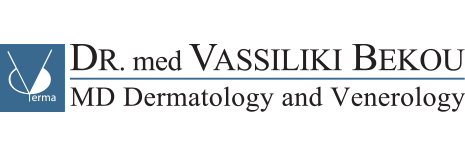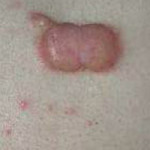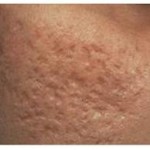
( For the texts and pictures books, publications, guidelines for example in awmf.org and contributions of colleagues were consulted.)
Scars
Scarring is one of the complex repair processes of the skin during the healing process after injury, surgery. From an excessive scar wound healing response in the form of hypertrophic scars or keloids may arise. Scars can also manifest as a “minus” of tissue with unsightly, dimple-like depressions of the skin. “Atrophic” these so-called scars can be caused by acne often. Depending on the type of scar, there are various treatment options.
1 Hypertrophic scars (scars overshooting)
1 silicone gels and films and pressure treatment
2 cryotherapy treatment with liquid nitrogen
3 injections of drugs (cortisone crystals, 5-fluoro- uracil)
4 Laser Therapy:
A Dye laser: especially when fresh, intense red scars
B Thermal or thermal – ablative laser: leads to flattening and smoothing of the scar tissue by heat shrinkage and reorganization (“remodeling”) of the connective tissue fibers
C Fractional Laser: Micro-fine, densely packed, geometrically arranged holes lead to flattening and tissue tightening
5 Surgical scar revision: revision of large keloids and the subsequent injection of scar -inflammatory drugs
2 Hypotrophic scars (scars under the skin level)
1 Microdermabrasion: in very superficial scars
2 Chemical peel: for large-scale smoothing of the skin, eg with trichloroacetic
3 Laser Therapy:
Flattening of the scar with thermal – ablative laser treatment
4 Subcision: in local anesthesia deep scars can be replaced from its base with a single sharp needle or a sharp wire (“wire scalpel”)
5 Surgical correction of scars: complete or renewal or extension sculptures, especially when shrunken, warped scars
6 Filling of scars: in deep defects with autologous fat, hyaluronic acid or polylactic acid.
Combinations of different treatment methods are possible. Mostly over the time you can achieve better results. Sun protection after treatment is recommended.


